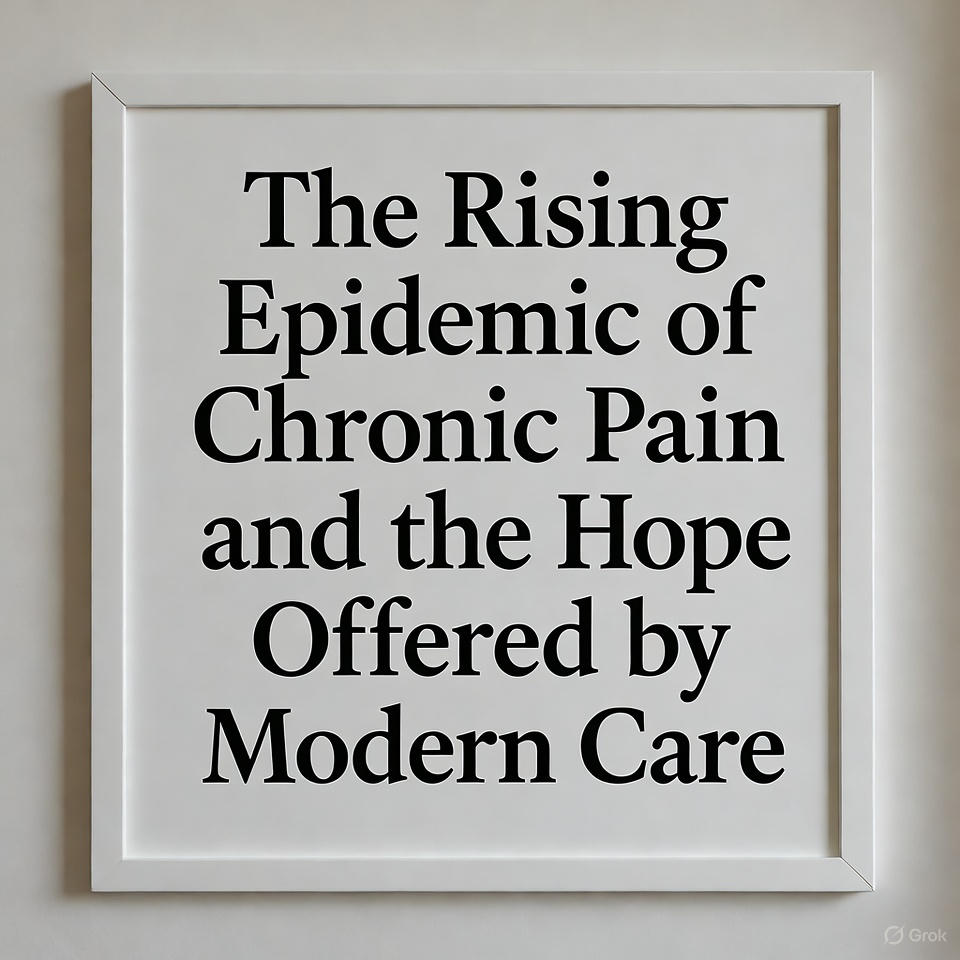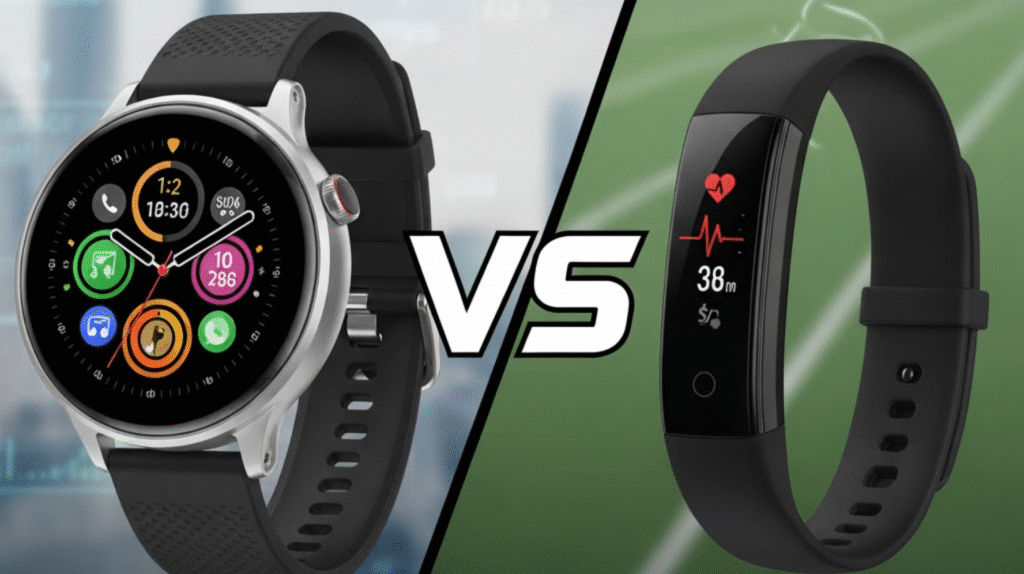Chronic pain has become one of the most widespread yet under-discussed health challenges in America. According to the CDC, more than 50 million adults live with some form of chronic pain, often affecting their ability to work, sleep, and perform daily tasks. For many, pain is invisible but all-consuming, impacting physical, emotional, and social well-being.
As a physician specializing in pain management, orthopedics, and rehabilitation, I have witnessed how pain reshapes lives. Yet modern medicine, guided by compassion and technology, offers new pathways to healing that go beyond traditional medication.
The Hidden Impact of Chronic Pain
Pain is not just a symptom; it is a condition in itself. Persistent discomfort changes how the brain processes signals, creating a cycle of sensitivity and suffering.
The consequences extend far beyond the physical:
- Mental health: Chronic pain often leads to depression, anxiety, and sleep disorders.
- Economic burden: Patients lose productivity and face mounting medical costs.
- Social withdrawal: Many avoid activities they once loved, leading to isolation.
The World Health Organization now classifies chronic pain as a disease entity, underscoring its importance in global health discussions.
Understanding What Causes Chronic Pain
Pain can originate from multiple systems within the body. Identifying its source is crucial for successful treatment.
Common causes include:
- Musculoskeletal injuries: Strains, fractures, or repetitive stress
- Spinal issues: Herniated discs, nerve compression, or arthritis
- Post-surgical pain: Especially after orthopedic or spinal operations
- Neuropathic pain: Nerve damage from diabetes or trauma
- Inflammatory disorders: Conditions like rheumatoid arthritis or fibromyalgia
Each cause demands a distinct diagnostic and therapeutic approach. That is why early evaluation by a trained specialist is essential.
How Modern Medicine is Transforming Pain Care
Gone are the days when pain management meant only medication. Today’s approach is multidisciplinary, blending medical science, technology, and rehabilitation.
1. Image-Guided Procedures: Fluoroscopy and ultrasound guidance allow precise delivery of injections into joints, nerves, or spinal structures. This ensures targeted relief with minimal side effects.
2. Regenerative Medicine: Platelet-rich plasma (PRP) and stem cell treatments help restore damaged tissues by promoting natural healing mechanisms.
3. Nerve Blocks and Radiofrequency Therapy: These procedures temporarily disrupt pain signals traveling through specific nerve pathways, providing longer-lasting relief.
4. Physical and Chiropractic Rehabilitation: Correcting posture, improving alignment, and strengthening muscles reduce mechanical stress on joints and the spine.
5. Behavioral Medicine and Counseling: Stress, anxiety, and emotional exhaustion amplify pain perception. Integrating cognitive behavioral therapy (CBT) and mindfulness has shown remarkable results in clinical outcomes.
The Role of Lifestyle in Pain Prevention
Pain care doesn’t end with treatment. Prevention is just as important. Simple habits have profound effects on musculoskeletal health.
Lifestyle recommendations:
- Maintain proper posture while sitting or standing.
- Stay active with low-impact exercises such as walking or swimming.
- Stretch regularly to maintain flexibility.
- Prioritize quality sleep for cellular recovery.
- Stay hydrated and eat anti-inflammatory foods like fish, nuts, and leafy greens.
These daily practices reinforce the body’s resilience and reduce recurrence of pain.
A Patient’s Journey: From Limitation to Liberation
A 52-year-old patient came to my clinic with chronic lower back pain that had persisted for years. She had tried painkillers, rest, and even multiple therapies without lasting relief.
After a detailed evaluation, we identified nerve irritation from a lumbar disc issue. Through a combination of targeted spinal injections, physical therapy, and posture retraining, she regained mobility within weeks.
Stories like hers remind us that pain is not a life sentence. With the right diagnosis and care, healing is possible.
Why Expert Pain Management Matters
Chronic pain is complex and requires more than one-size-fits-all care. Specialists in this field undergo advanced training in identifying the root causes and creating personalized, evidence-based treatment plans.
If you or someone you know is living with persistent discomfort, consulting a pain management doctor can provide clarity, precision, and relief. These experts combine modern diagnostics, minimally invasive procedures, and long-term rehabilitation strategies to restore quality of life.
Early intervention prevents minor discomfort from becoming permanent disability.
The Psychological Dimension of Pain
Pain affects the mind as much as the body. When discomfort becomes chronic, it rewires emotional responses, leading to fatigue, irritability, and hopelessness.
Incorporating mental health support—through counseling, meditation, or biofeedback—helps patients reclaim control over their emotional well-being. This holistic approach ensures recovery that is both physical and psychological.
The Future of Pain Medicine
The next generation of pain care will focus on precision and personalization.
Emerging trends include:
- AI-assisted diagnostics: Using imaging and predictive modeling to pinpoint pain origins
- Wearable pain sensors: Monitoring muscle activity and stress patterns in real time
- Virtual rehabilitation: Remote-guided physical therapy through digital platforms
- Integrative medicine: Combining acupuncture, physical therapy, and pharmacologic treatments under one coordinated plan
The future of pain management is about empowerment—helping patients live without dependence, restriction, or fear.
How to Support Someone Living with Pain
Families play an essential role in a patient’s recovery journey. Emotional validation, patience, and encouragement often accelerate healing.
Simple ways to help include:
- Listening without judgment
- Offering assistance with daily tasks
- Encouraging physical therapy attendance
- Promoting relaxation techniques such as deep breathing or gentle stretching
Empathy is sometimes as therapeutic as medicine.
Conclusion: Restoring Hope Through Modern Pain Care
Chronic pain can make life feel smaller. But with modern diagnostics, multidisciplinary care, and a patient-centered approach, it no longer has to define your future.
Whether the pain stems from injury, nerve damage, or long-term stress, early consultation with pain management expert can change the trajectory of your health. Their advanced expertise and compassionate care empower patients to move freely again, rediscovering the simple joy of living without pain.






